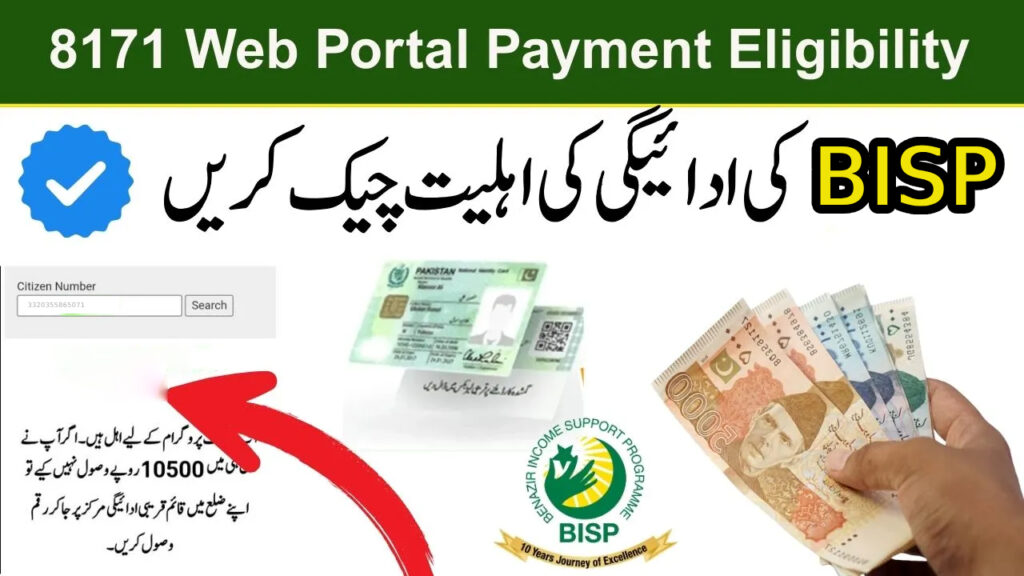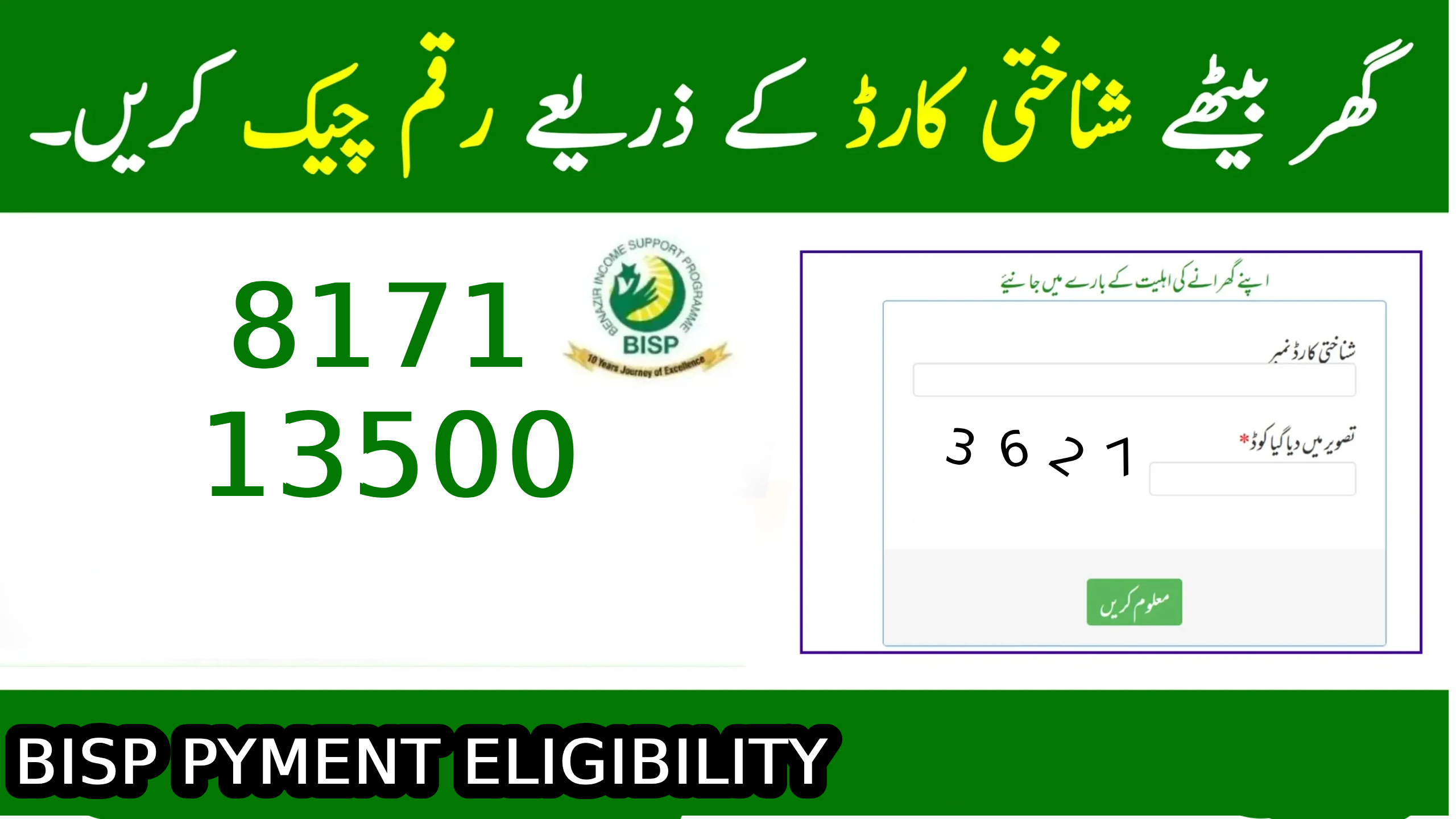Find out who qualifies for BISP payments in 2025. Learn about eligibility criteria, poverty score, CNIC check, and how to apply online or via SMS.
we’ll delve into the BISP payment eligibility requirements, the registration process, the National Socio-Economic Registry (NSER), and everything else you need to know in 2025.
What is BISP?&BISP Payment Eligibility
The Benazir Income Support Program is a flagship social welfare initiative of the Government of Pakistan. It provides quarterly cash disbursements to the poorest segments of society, enabling them to access essentials such as food, healthcare, and education.
Since its inception, BISP has evolved through several reforms, including the launch of the Ehsaas Program and the Dynamic Registry System. These enhancements aim to ensure transparency, inclusion, and efficiency in identifying and assisting the most vulnerable households.
Latest BISP Payment Updates in 2025
In 2025, the BISP program continues under the broader umbrella of social protection programs led by the Ministry of Poverty Alleviation and Social Safety. The quarterly payments have increased due to inflationary pressures, and digitized systems have made the registration and disbursement processes smoother.
Who is for BISP Payment Eligibility?
Eligibility for BISP payments is determined through a data-driven and objective scoring system using the National Socio-Economic Registry (NSER). The Poverty Scorecard plays a crucial role in identifying the deserving families.
Here are the key eligibility criteria for BISP payments:
1. Poverty Score Threshold
- A household must have a Poverty Score of 32 or below (in some areas, the cut-off is even lower depending on regional poverty levels).
- This score is calculated based on:
- Household size
- Education level of household head
- Housing conditions (e.g., kacha/pakka house)
- Assets owned (vehicles, land, appliances)
- Employment status of household members
2. Female-Headed Household or Female Representative
- Preference is given to families where a woman is the head of the household, or is nominated as the payment recipient.
- Only women aged 18 and above can receive BISP payments.
3. Pakistani Citizenship
- The applicant must be a Pakistani citizen with a valid Computerized National Identity Card (CNIC) issued by NADRA.
4. No Government Employment or Pension
- No family member should be employed in a government department or receive a government pension.
- BISP is intended strictly for non-governmental, low-income families.
5. No Significant Business or Property Ownership
- The family must not own large landholdings or operate high-value businesses.
- Ownership of multiple properties or vehicles may lead to disqualification.
6. No International Travel History
- Applicants or their immediate family members who have traveled abroad for work or leisure may be considered ineligible.
- The rationale is that foreign travel indicates a higher economic status.
Who is Not Eligible for BISP?
To clarify further, the following individuals are not BISP Payment Eligibility financial assistance:
- Government employees (including retired personnel receiving pensions)
- Individuals owning land above a specified threshold (e.g., more than 12.5 acres)
- Those who pay income tax
- Families that have sent a member abroad for employment
- Those running large-scale businesses
- Individuals with utility bills (electricity or gas) above certain limits (e.g., above PKR 10,000 per month)
How to Check BISP Payment Eligibility Online in 2025

The Government of Pakistan has streamlined the process for checking BISP payment eligibility:
Step-by-Step Guide:
- Visit the BISP or Ehsaas official portal:
- Enter your CNIC number in the required field.
- Complete the captcha verification and click “Submit”.
- The system will show your eligibility status—eligible, under verification, or ineligible.
Alternatively, you can send your 13-digit CNIC number to 8171 via SMS to check your eligibility.
NSER Survey and Dynamic Registration
The NSER (National Socio-Economic Registry) survey is the cornerstone of BISP’s targeting system. It collects data from households to assess their poverty level.
How to Register Through NSER:
- Visit your nearest BISP/NSER registration center with the following documents:
- Original CNIC (for all adult family members)
- Bay Form (for children)
- Utility bills (optional)
- The representative will collect household data and issue a receipt or token.
- You will be informed of your eligibility via SMS from 8171.
Dynamic Registry Update in 2025
The 2025 version of the Dynamic Registry allows people to update their records anytime. For example, if your financial situation worsens, or your family size changes, you can request a re-survey to potentially qualify for BISP support.
How Are BISP Payments Made?
Once eligibility is confirmed, beneficiaries are issued a BISP Card or receive payments digitally through:
- Bank transfers
- Mobile wallets (e.g., HBL Konnect, JazzCash)
- Designated BISP payment centers
- ATMs (for beneficiaries with BISP debit cards)
Beneficiaries receive quarterly payments, and they’re informed through SMS alerts when their funds are available.
Final Thoughts
The BISP payment eligibility criteria are designed to ensure that only the most deserving families receive financial aid. As Pakistan continues to face economic challenges, BISP serves as a crucial safety net for millions. If you or someone you know is struggling financially, it’s worth exploring this government initiative.
By keeping your NSER information up-to-date and following the proper channels, you can ensure your household remains eligible for this vital support system.

